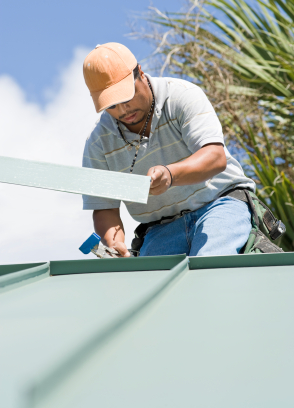The unpredictability of the weather can lead to different kinds of surprising situations. One moment the wind is blowing to the east and then its movement suddenly changes to a westward direction. Moments like this can catch many people unprepared. The devastating effects of such surprising situations can still be avoided by learning the different important aspects of emergency roof repair.
Materials Needed
Because this is all about an emergency, it is best to be prepared with a number of useful and highly important materials. Inside your storage room, you can put a measuring tape, sheet metal and plywood scraps. Aside from these, you also need to store a caulking gun, a set of tacks and plastic sheeting. Furthermore, you must also have a hammer, flashing and caulks. Lastly, prepare tin snips, nail and a staple gun. Be sure to put all these things in one secure place in case the need for emergency roof repair arises.
Steps
Because of the timing as well as the sense of urgency involved, this seemingly easy task becomes a moderately challenging one. Measure the size of the damage, crack or leak right away using the tape measure. After this, use the tin snips to cut the roof flashing or sheet metal. From these, create pieces that are about 6 inches bigger than the leak or crack. This will guarantee that the damage is completely covered.
Put the edge of every cut metal piece above the leak just under the shingles. Use a temporary patch by putting a scrap of wood on top of the edge. You can put the hammer on top of the temporary patch to hold it in place. When necessary, you can create a larger patch by folding a plastic sheet in half. Attach the plastic to the roof with the help of a staple gun. This will prevent leaks temporarily.
While the plastic is covering the leak, you can now apply silicone caulk all over the edges. Be sure that the plastic is secured, just enough to allow the silicone caulk to dry up. In case the wind is strong enough to disrupt the efficiency of the plastic patch, get the hammer and then use it to pound tack strips all over the edges.
Additional Tips and Other Helpful Information
Apply enough strips to hold the plastic in place. It is good to use a tool belt in these situations because it gives you instant access to the different kinds of tools you need. Be extremely careful when climbing up the roof because it can be slippery. Furthermore, strong winds can knock you off the roof.



